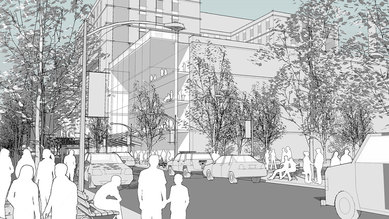Planning in a Time of Uncertainty
Healthcare planners and designers are trained to solve problems: we seek the opportunities and challenges of any given client relationship, site relationship, and program statement. We bring experience and as much evidence-based precedent that is relevant and timely. How many times have we designed an elegantly innovative solution that minimizes risks and enhances value for our client and our users only to discover that some unforeseen issue, or unanticipated cost, caused the solution to be heavily modified or even rejected? Perhaps the value proposition of our solution wasn't adequately clear, of incorrect scale, or had unintended consequences? Perhaps the solution didn't respond adequately to the level of industry transformation we are experiencing? Wouldn't it be marvelous if we actually solved the right problem?
Facilities, and their sites, are strategic resources. To ensure long-term value, they must foster healing, learning and discovery. They should enhance culture and ensure efficient operations. They should facilitate healthcare quality and safety and respond to technological and pedagogical change. Most important, they should be grounded in integrated clinical care delivery and learning models within facility settings that optimize the use of finite resources.
If one embraces the philosophy that resources are strategic, then it follows that industry transformation requires a strategic response. A model of a 'future state' should be individualized for each organization; and that future state should be used as a touch-stone for anticipated facility development.
